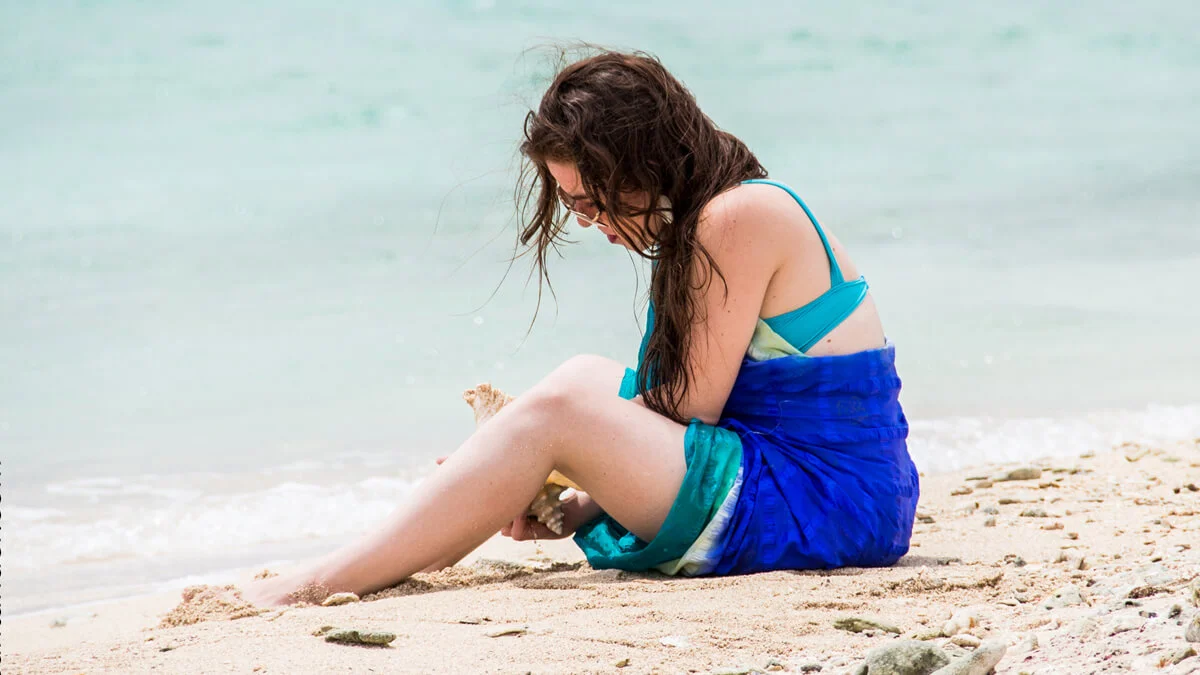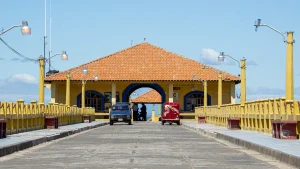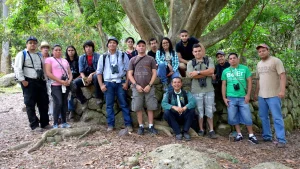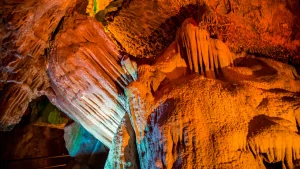Sun and Beach Activities in Honduras

Table of contents
-
Honduras beaches
- Dolphin Encounter, Roatan
- Carambola Botanical Garden, Roatan
- Sandy Bay, Roatan
- West End, Roatan
- West Bay Beach, Roatan
- Punta Gorda, Roatan, Bay Islands
- Gumbalimba Park, Roatan
- Arch’s Iguana and Marine Park, Roatan
- Utila Keys, Utila
- The Pumpkin Hill, Utila
- Chepes Beach, Utila
- Turtle Harbor Park, Utila
- El Soldado Beach, Guanaja
- El Soldado Beach, Guanaja
- Deena Beach, Guanaja
- Punta Sal Peninsula, Tela, Atlántida
- Cloth, Atlantis
- Triumph of the Cross, Cloth, Atlantis
- La Ceiba, Atlantida
- Sambo Creek, La Ceiba, Atlantida
- Tourist Walk of the Ceibeños, La Ceiba, Atlántida
- Puerto Cortés, Cortés
- Garifuna Communities of Travesía and Bajamar, Puerto Cortés, Cortés
- Coca Cola Beach, Puerto Cortés, Cortés
- Omoa, Courteous
- Alvarado Lagoon, Puerto Cortés, Cortés
- Eco Children’s Park San Ignacio, Omoa, Cortés
- Trujillo, Colon
- San Lorenzo, Valley
- Gulf of Fonseca, Valley
- Isla del Tigre, Valley
- Black Beach, Valley
Honduras beaches
Dolphin Encounter, Roatan
Begin by traveling across a lagoon to Bailey’s Key, one of the two keys that make up Anthony’s Key Resort, the private home of a large family of Atlantic bottlenose dolphins. During the 30-minute meeting, you will have excellent photo opportunities, in addition to the professional photos we will take of you and your new friends.
Carambola Botanical Garden, Roatan
It is an ideal place for hiking, wildlife and scenic photography, eco tours, teacher / student tours, bird watching, nature studies, and of course, relaxation. Therefore, you can “take a walk on the wild side” while enjoying the plants, orchids, medicinal plants, exotic spices, fruits and nut trees, including the very popular “Chocolate Tree” and the famous flowering tree. Honduran mahogany.
Sandy Bay, Roatan
To the west of Coxen Hole and on the way to West End, it is one of the most complete towns in Roatan. Here you can swim or dive with dolphins and enjoy their acrobatics at the Institute of Marine Sciences, which is at the Anthony’s Key Hotel next to the Roatán Museum. Both are open Thursday through Tuesday.
West End, Roatan
A reef with live coral and very close to the coast is the main attraction of this end of Roatán, which in addition to being the favorite place for diving, has the best beaches on the island. With the whitest sand and the most crystalline water stretched out without waves, almost motionless, as if it were an infinite natural pond, you swim or dive among colors and corals like nowhere else.
In West End you will also find the best hotels on the island, the most famous restaurants – specialists in seafood and cuisine from different countries -, apartments and rental houses for different budgets and most of the diving companies. West End is a few minutes from Coxen Hole by taxi, a little further by watertaxi, which is a much more pleasant option, and a 40-minute stroll along the beach. From this westernmost point of Roatán you see the lights of La Ceiba at night and, on very clear days, the mountains of Atlántida.
West Bay Beach, Roatan
Come and enjoy a wonderful relaxing day on our beautiful white sand beach: West Bay Tabyana Beach, a stunning natural beach. It is a truly incredible destination that is worth visiting. Here you can enjoy a variety of activities, such as: banana boat rides, glass bottom boats, boats and ocean kayaks, parasailing, snorkeling and jet skiing, among others.
Punta Gorda, Roatan, Bay Islands
It is the gateway for the Garífuna to Central America. Here the English arrived by boat to leave them after they rebelled in San Vicente, and today it is one of the most populated points on the island. Some 3,500 people, most of them Garífunas, have always been dedicated to artisanal fishing, but more and more are joining tourism and preparing to receive you in the part of the island that has the cleanest sea waters. The Carnival of Punta Gorda in April is the most ethnic and indigenous festival on the island, in the Central American cradle of the tip, among the traditional Garífuna flavors and colors.
Gumbalimba Park, Roatan
It is a place full of beautiful nature and adventure that can be enjoyed in the company of family and friends. If you want to spend time relaxing and entertaining in direct contact with nature, Gumbalimba Park will be able to meet your needs. Located in West Bay and facing the ocean, the park is a must-see destination for travelers on vacation to this beautiful island in Honduras.
Arch’s Iguana and Marine Park, Roatan
This wildlife sanctuary is dedicated to the conservation of marine life and corals. It is a special place whose aim is to show people another side of maritime life, one that needs to be respected and protected. Here, more than 40,000 iguanas can be found roaming freely.
Visitors can pet and feed the friendly reptiles, among other fun and learning activities and experiences. Iguanas are released into the wild each year, helping to maintain the island’s native reptile population. Other creatures living on the site include monkeys, rescued sea turtles, and tarpon fish.
Utila Keys, Utila
they are a group of 13 small keys in the southwestern part of the island. The main two, Suc-Suc (Pigeon) and Jewel Cay, are home to local fishermen descended from the first settlers who arrived in the first half of the 19th century from the Cayman Islands. Ragged Key is a refuge for countless species of birds that add to the impressive Caribbean landscape, whose waters are visited by dolphins, turtles and several other marine species.
In 1992, the keys were officially declared a Wildlife Refuge. Most of the keys are private, but several can be visited. Water Key is a desert point of white sand and tropical vegetation in the heart of the Caribbean where you enjoy a dream beach, crystal clear waters that can be explored by snorkeling, and isolation, which becomes a massive party on the first weekend of August in the Sun Jam festival.
The Pumpkin Hill, Utila
It is famous for being the highest point in Utila and the first visible part of the island when approaching by sea from any direction. Around the area, basaltic lavas and tuffs were erupted on an erosive surface crowned with coral, creating interesting rock formations that vary in colors from salmon pink, where volcanic ash has been combined with fossilized corals, to the dark blue black of basalt formations.
Over the millennium, decayed tropical vegetation has combined with eroded rocks to form a rich alluvial-type soil layer around the base of the hill, eventually turning to sandy terrain on the small plateau before reaching the coast. .
Chepes Beach, Utila
It is the best beach in Utila. Its crystal clear waters of perfect temperature, together with the white sand and palm trees, will make you feel that paradise does exist. Located 20 minutes after the end of the houses on the only main street in Utila.
Turtle Harbor Park, Utila
It is a Protected Wild Area of 934.09 ha, made up especially of wetlands that mix with flood savannas, mangroves, mixed forests and tic forests. It includes a sandy beach front, among other areas.
The peculiarity of this protected area lies in its dependence on the water regime, since its ecological structure is founded on the presence of this element. In addition, it is a site of great importance for several groups of vertebrates, among which migratory birds and the iguana utileña stand out. This protected area has excellent potential for sustainable tourism use due to the nature of the habitats it includes and its scenic beauty.
El Soldado Beach, Guanaja
It is ideal to have a good time enjoying the harmony of nature. You can relax on the white edges of the beach and soak up the sun, take a dip in the calm clear waters, and watch the adventurous little fish approach the shoreline of the beach.
El Soldado Beach, Guanaja
It is ideal to have a good time enjoying the harmony of nature. You can relax on the white edges of the beach and soak up the sun, take a dip in the calm clear waters, and watch the adventurous little fish approach the shoreline of the beach.
Deena Beach, Guanaja
It is a paradisiacal shoreline on the north side of the island, with white sand, a calm and transparent sea, an almost virgin pine forest and an amazing view of a desert bay. To get to this beautiful beach, you will have to cross unexplored landscapes whose beauty rivals that of any of its sister islands.
Punta Sal Peninsula, Tela, Atlántida
It is part of the Jeannette Kawas National Park, which is one of the parks with the greatest wealth and scenic beauty on the north coast. The Punta Sal peninsula has six white sand beaches, transparent waters and coral reefs. Not only swimming in these waters is a gift of nature, fishing too. In addition, the wildlife is spectacular: it has various species such as jaguars, howler monkeys and boas, among others.
Cloth, Atlantis
It is one of the main cities of Atlantis. It keeps under the same Caribbean sun: a kingdom of adventure -of land or water- in its two national parks and its botanical garden; a collection of blues, which only begins on its beaches, and another of natural shapes on its reef. All this with the Caribbean flavor of the machuca and rice and beans, among Garífuna rhythms – a culture that is an Intangible Heritage of Humanity and that lives on the fine sand of villages such as Tornabé, San Juan, La Ensenada and Triunfo de la Cross.
Triumph of the Cross, Cloth, Atlantis
Tela is the first city of colonial origin on the Honduran mainland. Christopher Columbus founded it on May 3 (Catholic festival of the Cross), 1524 as Villa del Triunfo de la Cruz. The name of the city evolved to Tela, but on the shores of the Caribbean, just over 9 km northeast of the city, the town with the name of Triunfo de la Cruz remains. It is the place that is home to one of the most numerous Garífuna communities on the coast. It has approximately 2 km of relatively calm sea beach, where you can find lodging and food services.
La Ceiba, Atlantida
It is the capital of the Honduran Caribbean, a carnival bride, a terrace overlooking the sea, a dance floor, an adventure shuttle, a ground floor and a prelude to rich natural treasures. The port city of La Ceiba was born around an immense ceiba, the sacred tree of the Mayans, at the end of the 19th century.
Hospitable and jovial people await you here, as well as the opportunity to enjoy the sun in the sea, or explore the richness of the natural parks, reef, mountain and mangrove that surround it. Its viewpoint, perhaps the highest mountain on the shores of the Caribbean, is a tropical forest from where streams drenched with adventure descend.
Sambo Creek, La Ceiba, Atlantida
If you were looking for the place with the most Garífuna in Honduras, 20 minutes from La Ceiba (15 km), heading to Trujillo, you will arrive at the village that also has the best dance and dance groups in the area. Whether the best rhythms are enjoyed by ear or on the go, the flavors of authentic Garifuna cuisine add another meaning to your experience at Sambo Creek. The Kabasa restaurant and the Tourist Center are two good options.
Here you can enjoy fish, shellfish and soups, coconut milk, cassava or cassava, machuca and cassava, among the hospitality of a friendly and open community that shows you its own houses, the best points of a beach that seems to be made with flour and tea. leads to Cayos Cochinos or Laguna del Cacao. Don’t leave without trying guifity, a blend of herbs and rum that is credited with many effects. You can arrive by car, bus or taxi, and also go by boat with your own experiences, shared and to share.
Tourist Walk of the Ceibeños, La Ceiba, Atlántida
It is a place located on the seashore, where you can have a good time with family and friends, and enjoy a beautiful landscape and sunsets. It has a tourist parador where you can take pictures with the immense sea in the background, and taste different dishes since you can find several restaurants and food sales around.
It is furnished with furniture to provide comfort to residents and tourists who visit the site. Wide sidewalks were made along the promenade for walking, benches were placed for a quiet rest while observing the landscape, and it is illuminated with lanterns at night, in addition to having bathrooms, fresh water taps to eliminate salt water, games for children and an area for parking vehicles.
Puerto Cortés, Cortés
It is the most modern port city in Central America and was one of the first Spanish foundations in Honduras. Established in 1524 as Villa de Puerto Caballos, Puerto Cortés is a city that, preserving its serene rhythm of life, has developed around this «Safe Harbor» – certified for trade with the United States -, its industrial parks and maquilas.
In «El Puerto» you have an interesting option for day trips from San Pedro Sula – only 55 km away – or to enjoy the beach, the Garifuna cuisine and culture or the variety of bird species that live in the mangroves of the Laguna. of Alvarado. Playa Municipal and La Cieneguita are two of the best options to enjoy the Caribbean sun overlooking the port. Moving a little further, you arrive in about 20 minutes at the Garifuna communities of Travesía and Bajamar, where you can taste Garifuna dishes made in wood-fired ovens. You can also book a guided tour of the National Port Company.
Garifuna Communities of Travesía and Bajamar, Puerto Cortés, Cortés
Located on the west coast of the municipality, they are two very popular towns, especially for national tourists during holidays, such as Easter. These communities, although relatively far from the port, are easily accessible, safe and also have basic services (drinking water and electricity).
They cover an area of approximately 10 kilometers of sandy beaches, sun and beautiful sea, where you can find restaurants, hotels and various other points of sale. Its main attraction is the closeness that can be enjoyed with the Garífuna people, being involved in their culture and customs: the rhythms of the tip with unique instruments (such as snail or turtle shells), the flavors of coconut and seafood, and guifiti, a drink made from a mixture of herbs, roots, spices and brandy.
Coca Cola Beach, Puerto Cortés, Cortés
Located near the community of Cieneguita in Puerto Cortés, the Coca Cola beaches are the most famous and most visited in the port. These municipal beaches have a series of restaurants and bars where you can have lunch during your stay in the area.
They got their name because the Coca Cola warehouse is located precisely in this sector of the port. During weekends and holidays, these beaches are frequented both by the «porteños» (as the locals are known) and by vacationers from San Pedro Sula and other cities in the country.
Omoa, Courteous
The Caribbean departs for a few miles and shores inward to the Honduran coast at Omoa Bay. The waves are calm, the deeper waters and the sunsets are the kind that deserve to be enlarged on the photo taken. In this natural refuge stands the Fortress of San Fernando de Omoa, built by the Spanish to defend themselves against pirates and corsairs. This oceanfront stone and coral trench is the main colonial-era military construction in Honduras.
As you walk around, it invites you to imagine what life might have been like between its thick stone walls. Omoa also offers the forest, zoo, swimming pools and cabins of the Eco Parque Infantil San Ignacio; the mountain, waterfalls and canopy of Rawacala Eco Tour; the municipal beaches and those of nearby communities such as La Masca, which provide the opportunity to visit a Garífuna community and discover the flavor of the coastal cuisine of seafood and fish.
Alvarado Lagoon, Puerto Cortés, Cortés
It is a more generous landscape than one might suppose. It does not stop at being a freshwater prelude to the Caribbean of Puerto Cortés: it keeps alive a mangrove forest and various trees around it and is home or temporary refuge for several species of aquatic birds.
The fresh water mirror over which one passes to enter Puerto Cortés duplicates the sky, the sun and the vegetation that breathes on its shores, to offer again the life of those who see it on the reflected water. If you hire a boat tour to explore it, you can visit the Chamber channel, populated with thick vegetation on both banks, and calculate that the sunset will arrive while you are still on the water. The sunset tones in Puerto Cortés are worth the moment.
Eco Children’s Park San Ignacio, Omoa, Cortés
It is a private forest reserve that also has a zoo, with various species of native and other exotic animals. You can also enjoy the pools and have a fun time sliding down the slides. It has cabins of different sizes for those who want to spend the night.
Trujillo, Colon
Away from the traditional tourist routes, in a deep bay and with perhaps the most beautiful beaches in continental Honduras, Trujillo awaits surrounded by the wildlife of the Guaymoreto Lagoon and the Capiro and Calentura peaks. It has a busy colonial past, amid the attacks of corsairs and pirates. That is why the Fortress of Santa Bárbara was built there, from where it later resists buccaneers and filibusters.
In the transition to the twentieth century and its first decades, it lives a prosperous banana era, which eventually goes along with the companies. What is less known about Trujillo is that it also has a rich pre-Columbian past, yet to be investigated. In addition to its history and the living culture of its Garífuna communities, in Trujillo there are the beaches of Campamento and Santa Fe, blankets of calm transparent waters tinged with turquoise; the biodiversity of the mangroves of the Guaymoreto Lagoon merging with the Caribbean and of the jungle of the Capiro and Calentura National Park; and a dock for cruise ships.
San Lorenzo, Valley
It is the most active city in the Valley. It received its name from the Christian martyr. It is one of the main entry and exit doors for products in the Honduran Pacific, and a source of economic income for the city. Next to the port, the shrimp and salt industries have turned San Lorenzo into a thriving, entrepreneurial and artistic city. Proof of this are its multiple squares with sculptures of marine themes, such as El Tiburon, El Camarón, El Pelicano and the Plaza de Puerto Viejo, in addition to the completely remodeled central park.
Gulf of Fonseca, Valley
Honduras extends to the Pacific on a short coastline and numerous islands and islets distributed in the Gulf of Fonseca. The south is an area with high temperatures that can be traveled with various interests in mind. If you are looking for colonial architecture, plan a route through the churches of Pespire, Langue, Nacaome and Choluteca, most of which are very well preserved.
If you want different flavors, a similar route takes you between donuts, tustacas and quesadillas (all made of corn and cheese); and the soups and seafood from San Lorenzo, which in addition to curiles and hulls (which you only find in the area), offers you an original seasoning for crabs, shrimp, fish and seafood soups.
Isla del Tigre, Valley
It is a small island with a kilometer in diameter and a fishing community located between San Lorenzo and Jícaro Galán. It is a beautiful place with a lot of history, told through its colonial structures.
Black Beach, Valley
Located in front of the Gulf of Fonseca, Playa Negra is very popular due to the gentle surf and its easy access. Its sunsets are one of the most romantic and ideal panoramas for photography. Likewise, the starry sky at night is impressive. From the beach you can see the Cosigüina Volcano, as well as the territory of the sister country of El Salvador.





